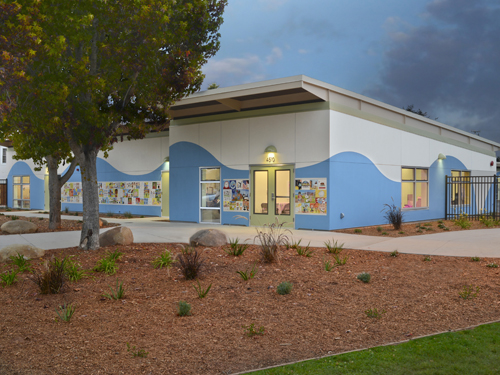Sustainable Building Design
Weston Miles Architects, Inc. (WMA) is an award-winning landscape and architecture business that practices innovative and sustainable building design. WMA offers architectural services for the construction of educational facilities, civic, residential, and historical renovations. WMA has been recognized for nearly a decade by the Silicon Valley Business Journal as one of the top 25 architecture and design firms in the area. Concepts from the U.S. Green Building Council have been integrated into their work to provide not only the highest quality, but the most environmentally friendly structures possible. WMA integrates sustainable design features such as natural lighting and ventilation systems, energy efficient lighting fixtures controlled by motion sensors, low VOC and high recycled content building materials, low-flow water fixtures, drought-resistant landscaping, and more.
WMA has taken significant actions to reduce their impact on the environment, while sustaining a thriving business. Housed in a beautiful workplace designed to meet green building standards, employees collaborate to monitor and improve their energy use, waste reduction, and transportation needs. Free tours of WMA’s office building are available to teach the public about how sustainability can be incorporated into homes and buildings.
What actions did WMA take to save energy?
Employees do their best to use only energy that is necessary, wearing warm clothes in the office on cold days and utilizing natural sunlight and ventilation whenever possible. An ENERGY STAR® rated copy machine was purchased to further reduce energy consumption. WMA also installed a sixteen kilowatt photovoltaic system to harness the natural energy of the sun. This action lowered their monthly energy bill by twenty-five percent, saving up to ten thousand dollars per year. Since installation in 2008, the system has avoided emitting at least 106, 244 pounds of carbon dioxide, equaling the annual emissions from 9.4 passenger vehicles or six average households. Within twelve years the solar energy system will pay for itself and continue to save WMA money in the future.
What actions did WMA take to reduce waste?
WMA strives to be a zero waste office by using recyclable and reusable items whenever possible. Employees produce less waste by bringing waste-free lunches, photocopying and printing on both sides of the paper, e-mailing correspondence and storing all documents electronically. WMA updated and organized their entire trash and recycling system by placing recycle bins next to every trash container in the building, including private employee trash receptacles. WMA educated all building personnel on the new recycling system, and informed employees of what is recyclable and what is not. They have extended their green business practices to others by sharing the recycling system with surrounding businesses.
What actions did WMA take to reduce transportation?
Transportation is kept at a minimum by relying on conference calls for meetings with multiple consultants and clients. Sites are visited only when necessary and carpooling is used when more than one person goes out to the field.


Opal Cliffs Elementary School in Capitola, California was designed by Weston Miles Architects. The buildings feature insulated concrete to increase heating and cooling efficiency and reduce utility bills.
A certified green business that integrates sustainability into their versatile building design.
Energy Efficiency Renovations:
- Housed in a LEED™ Gold certified office building
- Installed 99 photovoltaic panels for energy needs (a 16 kilowatt solar energy system)
- Has an organized recycling system
- Uses an energy efficient copy machine
- Stores all memos and documents electronically
- Teleconferences are used to reduce travel
- Encourages carpooling
Total Savings:
- $8,000 – $10,000 annually
Greenhouse Gas Savings:
- 106,244 lbs. of CO2, equivalent to emissions from burning over 5,300 gallons of gasoline
